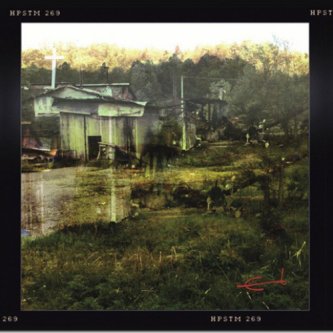EnomisossaB – La merce perfetta, CD agosto 2012, EU 12,00
EnomisossaB: voce
Riccardo Parravicini: registrazione, campionamenti
Maiu: tastiere, registrazione
Roberto Leardi: percussioni, metalli
Fausto Balbo: registrazione, bordone, emissioni otoacustiche
Alessandro Battistini: basso, bordone
Mixed by Riccardo Parravicini @ Modulo Studio recording in Cuneo
mrminio: photo outside cover
First of all, I hate captions.
“Oggi a me, domani a te” ( “Today me, tomorrow you” ) is simply an inscription on the gates of a cemetery beneath the Barchi Tower.
The tower is the most emblematic sign of the ninth century saracen invasion of the Alta Val Tanaro, a remote corner of north-western Italy.
The place name, Eca Nasagò, is derived from two arabian phoenemes meaning “ferocious” and “battlefield”.
It’s in Ormea: a small village on the outskirts of the Piedmontese mountains, it stands above the Ligurian coastline.
Ulmosciu, the local dialect, is a weird mix of Piedmontese, Ligurian, Arabian, German and French.
There are no similar languages in the area.
For example, the train comin’ from the plain in ulmosciu is “sbrivotzu”.
Meanwhile the train goin’ down the valley is “scuriatzu”.
I’ve used these two rare, unique words, connecting to southern Italian traditions.
In fact, at the start of the piece, my pronunciation is Neapolitan.
And I’m talkin’ about “A’ livella”, a poem wrote by Totò, one of the greatest actors of the twentieth century.
So deeply ancient, early Christian-like, a marvel of our popular literature.
It’s about death as a spirit level for everybody; rich and poor.
The whole track is a representation of chaos, and of the entropic energy on planet earth.
“La merce perfetta” is made of circles and spirals.
I’ve taken the most bitter phrases of Alberto Camerini’s “Droga”, a cut-up that I sing in the first verses as a vocal poem then as a soul song.
And by the way, It’s not about the meaning of the lyrics, but rather the sound of the words.
Using the voice in this way serves to introduce the second stanza: overtunes, glossolalia, falsettos, scat, blues, etc.
What I’ve sung is assaulting me from the inside.
The last part, the third one, is about sound perception. Therefore we have a drone, a low-pitched bass and glitchings.
The singing is free improvisation, a fifteen minute take one. It’s not perfect (who cares?) but it’s imbued with emotion, so groovy.
The only way to finish the number before getting lost in DPOAEs…
But at this point you’re as well just to listen.


COMMENTI